39 dv on food labels
Reference Daily Intake - Wikipedia The Daily Value (DV) is put on the labels of food products and is meant for the general population. Daily Values. The FDA issued a final rule on changes to the facts panel on May 27, 2016. The new values were published in the Federal Register. The original deadline to be in compliance was July 28, 2018, but on May 4, 2018, the FDA released a ... Food Trucks in Grand Marais, Manitoba - Urbanspoon/Zomato Food Trucks in Grand Marais, Manitoba. Menus, Photos, Ratings and Reviews for Food Trucks in Grand Marais, Manitoba - Food Trucks. By using this site you agree to Zomato's use of cookies to give you a personalised experience. Please read the cookie policy for more information or to delete/block them. Accept
Percent daily value - Canada.ca The % DV is found on the right-hand side of a nutrition facts table. It is a guide to help you make informed food choices. It shows you if the serving size has a little or a lot of a nutrient: 5% DV or less is a little 15% DV or more is a lot This applies to all nutrients with a % DV.

Dv on food labels
How to Calculate % of Daily Value on Food Labels | livestrong Percent of daily value is included for many nutrients but not all. Video of the Day Step 1 Find the nutrient amount on the food label. Step 2 Look up the total daily recommended amount in the USDA Dietary Guidelines. Step 3 Divide the nutrient amount by the total daily recommended value. Step 4 Multiply by 100. Things You'll Need Food Labels | CDC - Centers for Disease Control and Prevention All the numbers on this label are for a 2/3-cup serving. This package has 8 servings. If you eat the whole thing, you are eating 8 times the amount of calories, carbs, fat, etc., shown on the label. Total Carbohydrate shows you types of carbs in the food, including sugar and fiber. Choose foods with more fiber, vitamins, and minerals. How to Read Food Labels: Your Complete Consumer Guide Sep 14, 2022 · The words and images on packaged foods are there for one of two reasons — to sell or to inform. Food manufacturers want to present their products in as positive a light as possible and may sometimes make questionable claims about them. Regulators want the labels to include clear and honest data about quality, nutrients, and ingredients. The result is often a …
Dv on food labels. Changes to the Nutrition Facts Label | FDA - U.S. Food and Drug ... Mar 07, 2022 · Manufacturers with $10 million or more in annual sales were required to update their labels by January 1, 2020; manufacturers with less than $10 million in annual food sales were required to ... Percent daily value - Canada.ca The % DV is found on the right-hand side of a nutrition facts table. It is a guide to help you make informed food choices. It shows you if the serving size has a little or a lot of a nutrient: 5% DV or less is a little; 15% DV or more is a lot; This applies to all nutrients with a % DV. Nutrition Facts table formats - Food labels - Canadian Food … Food as prepared. Calories % DV for any nutrient that is declared as a % DV for the food as sold, and; Absolute values are not declared for the prepared food; Footnotes. A mandatory footnote links the absolute values (g, mg) declared in the NFt to the product as sold, for example, "† Amount in food as sold". See the symbol † attached to the ... What does %DV, "Good Source" & "High Source" mean? Simply put, the daily value (which is not listed on nutrition labels) is the amount of each nutrient that an average person (above age 4) needs for basic health—assuming the average person also requires about 2,000 calories per day. The percentage shows the amount of the DV that the food provides per serving.
Understanding food labels - Canada.ca Food labels, nutrition facts tables, serving size, ingredients, % daily value, nutrition claims. Services and information. Nutrition facts tables. How to use, what is in them, foods that don't have a nutrition facts table. Serving size. How to use the serving size on nutrition facts tables. Daily Value on the New Nutrition and Supplement Facts Labels The Nutrition Facts label must list total fat, saturated fat, trans fat, cholesterol, sodium, total carbohydrate, dietary fiber, total sugars, added sugars, protein, and certain vitamins and... Why is organic food more expensive than conventional food? Non-certified organic food. In many developing countries, there are agricultural systems that fully meet the requirements of organic agriculture but which are not certified. Non-certified organic agriculture refers to organic agricultural practices by intent and not by default; this excludes non-sustainable systems which do not use synthetic ... Iodine - Health Professional Fact Sheet - National Institutes of Health The DV for iodine is 150 mcg for adults and children aged 4 years and older . FDA does not require food labels to list iodine content unless iodine has been added to the food. Foods providing 20% or more of the DV are considered to be high sources of a nutrient, but foods providing lower percentages of the DV also contribute to a healthful diet.
Health Food Stores in Beausejour MB | YellowPages.ca™ 1 Nurture Your Senses Health and Wellness. 63 A Main St, Selkirk, MB R1A 1R2 Get directions. Progressive, Natures Way, Flora, Lorna Vanderhaeghe, Now, Women's Scense, Pure Anada Makeup, Bell, Hylands, Natural Factors, Boiron. Sangster's Health Centre is Canada's leading health store! We offer natural vitamins and minerals, as well as food ... How To Read Food and Beverage Labels - National Institute on Aging Or you can call the U.S. Department of Agriculture's Food and Nutrition Information Center at 301-504-5414. Understanding percent Daily Value (% DV) The percent Daily Value (% DV) tells how much a nutrient in a serving of the food or beverage contributes to a total daily 2,000-calorie diet. What does percent Daily Value (DV) on food labels mean? Daily values are average levels of nutrients for a person eating 2,000 calories a day. A food item with a 5 percent DV means 5 percent of the amount of fat that a person consuming 2,000 calories per day would eat. Remember, percent DVs are for the entire day -- not just for one meal or snack. You may need more or less than 2,000 calories per day. How To Read Food and Beverage Labels - National Institute on Aging Feb 24, 2022 · Reading food labels can help you make smart food choices. Learn how to read and understand the product date, ingredient list, and Nutrition Facts label. ... If a food has 5% DV or less of a nutrient per serving, it is considered low in that nutrient. If it has 20% DV or more of a nutrient per serving, it is considered high in that nutrient.
Daily Values (DVs) - National Institutes of Health DVs were developed by the U.S. Food and Drug Administration (FDA) to help consumers determine the level of various nutrients in a standard serving of food in relation to their approximate requirement for it. The label actually provides the %DV so that you can see how much (what percentage) a serving of the product contributes to reaching the DV.
Learn About Daily Values On Food Labels | Chegg.com Daily value (DV) food labels are present on almost every packaged food or drink container. Every label contains product-specific information. A standard nutrient label includes various information on ingredients like the serving size, number of calories, saturated fat, trans fat, total grams of fat, cholesterol, sodium, total carbohydrates, dietary fibers, sugars, proteins, calcium, iron, and ...
The Lows and Highs of Percent Daily Value on the Label 5% DV or less of a nutrient per serving is considered low. 20% DV or more of a nutrient per serving is considered high. More often, choose foods that are: Higher in dietary fiber, vitamin D,...
Selkirk Food Bank 310 Christie Ave Selkirk, MB Food Banks - MapQuest Get directions, reviews and information for Selkirk Food Bank in Selkirk, MB. Selkirk Food Bank 310 Christie Ave Selkirk MB R1A 2L6 (204) 482-9178. Menu & Reservations Make Reservations . Order Online Tickets Tickets See Availability Directions {{::location.tagLine.value.text}} ...
Manitoba, MB Food Trucks Guide - Menus and Reviews - MenuPix Results 1 - 3 of 3 restaurants. Tia Maria Taqueria ($$) Latin American, Food Trucks, Mexican • Menu Available. 5-275 Main St, Steinbach, MB. (204) 326-3890. Write a Review! The Churro Stop ($) Food Trucks • Menu Available. , Winnipeg, MB.
Dv Food Labels | Zazzle Stick out with amazing Dv food labels at Zazzle! Labels for jars in a huge range of theme & designs. Add art or text with our design tool. Make an impression today!
Use of the Term Healthy on Food Labeling | FDA Oct 07, 2022 · Claims like “healthy” on food labels can provide information to consumers to help them identify healthier food choices at a quick glance. ... 0% DV. 0% DV. 20% of total fat. Oil-based Spreads ...
What does dv mean on food labels? - Dane101 Percent Daily Value (DV) on the Nutrition Facts label is a guide to the nutrients in one serving of food. For example, if the label lists 15% for calcium, it means that one serving provides 15% of the calcium you need each day. DV s are based on a 2,000-calorie diet for healthy adults. What does 5 percent DV mean in food?
How to Read Food Labels: Your Complete Consumer Guide Sep 14, 2022 · The words and images on packaged foods are there for one of two reasons — to sell or to inform. Food manufacturers want to present their products in as positive a light as possible and may sometimes make questionable claims about them. Regulators want the labels to include clear and honest data about quality, nutrients, and ingredients. The result is often a …
Food Labels | CDC - Centers for Disease Control and Prevention All the numbers on this label are for a 2/3-cup serving. This package has 8 servings. If you eat the whole thing, you are eating 8 times the amount of calories, carbs, fat, etc., shown on the label. Total Carbohydrate shows you types of carbs in the food, including sugar and fiber. Choose foods with more fiber, vitamins, and minerals.
How to Calculate % of Daily Value on Food Labels | livestrong Percent of daily value is included for many nutrients but not all. Video of the Day Step 1 Find the nutrient amount on the food label. Step 2 Look up the total daily recommended amount in the USDA Dietary Guidelines. Step 3 Divide the nutrient amount by the total daily recommended value. Step 4 Multiply by 100. Things You'll Need

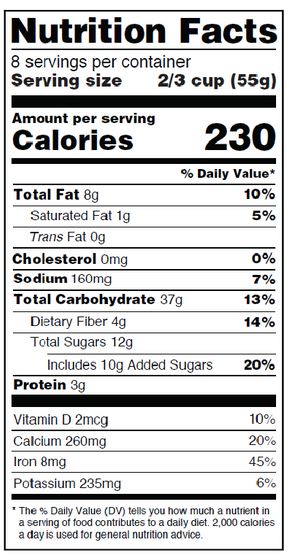
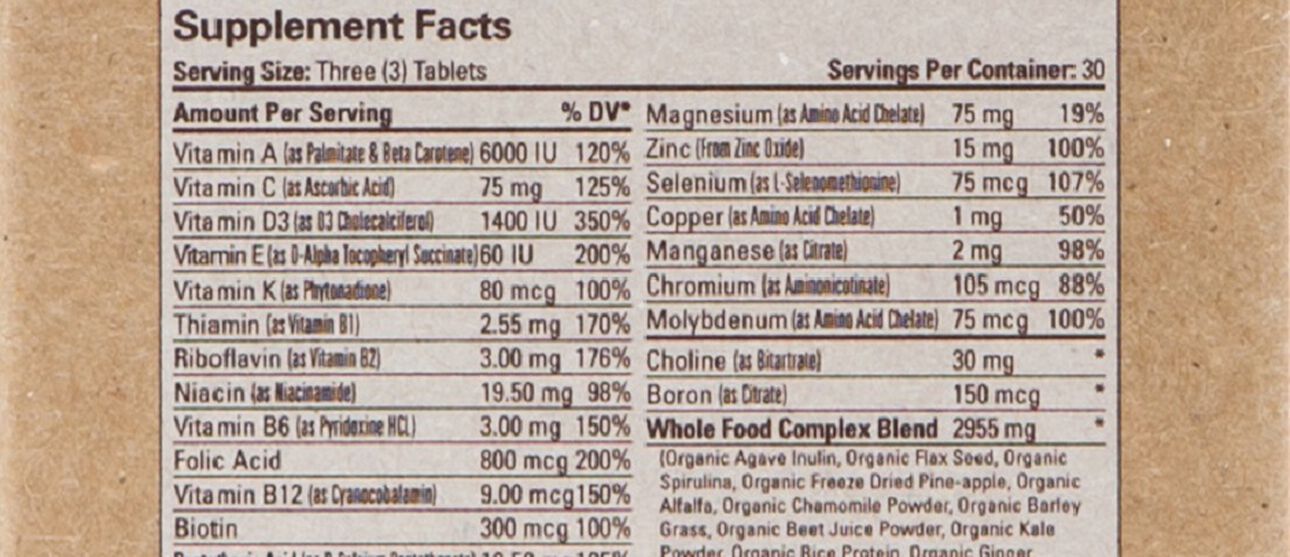


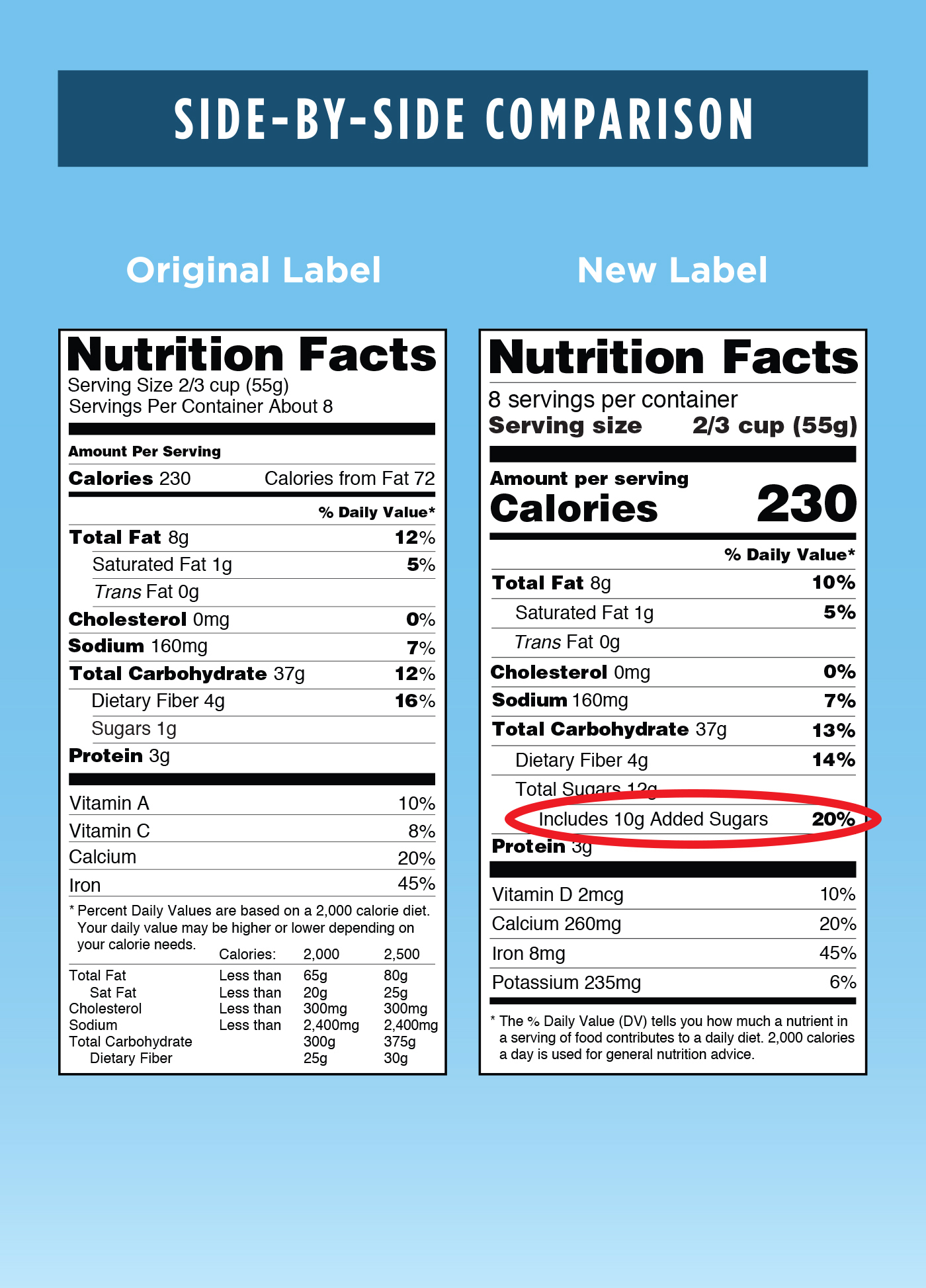

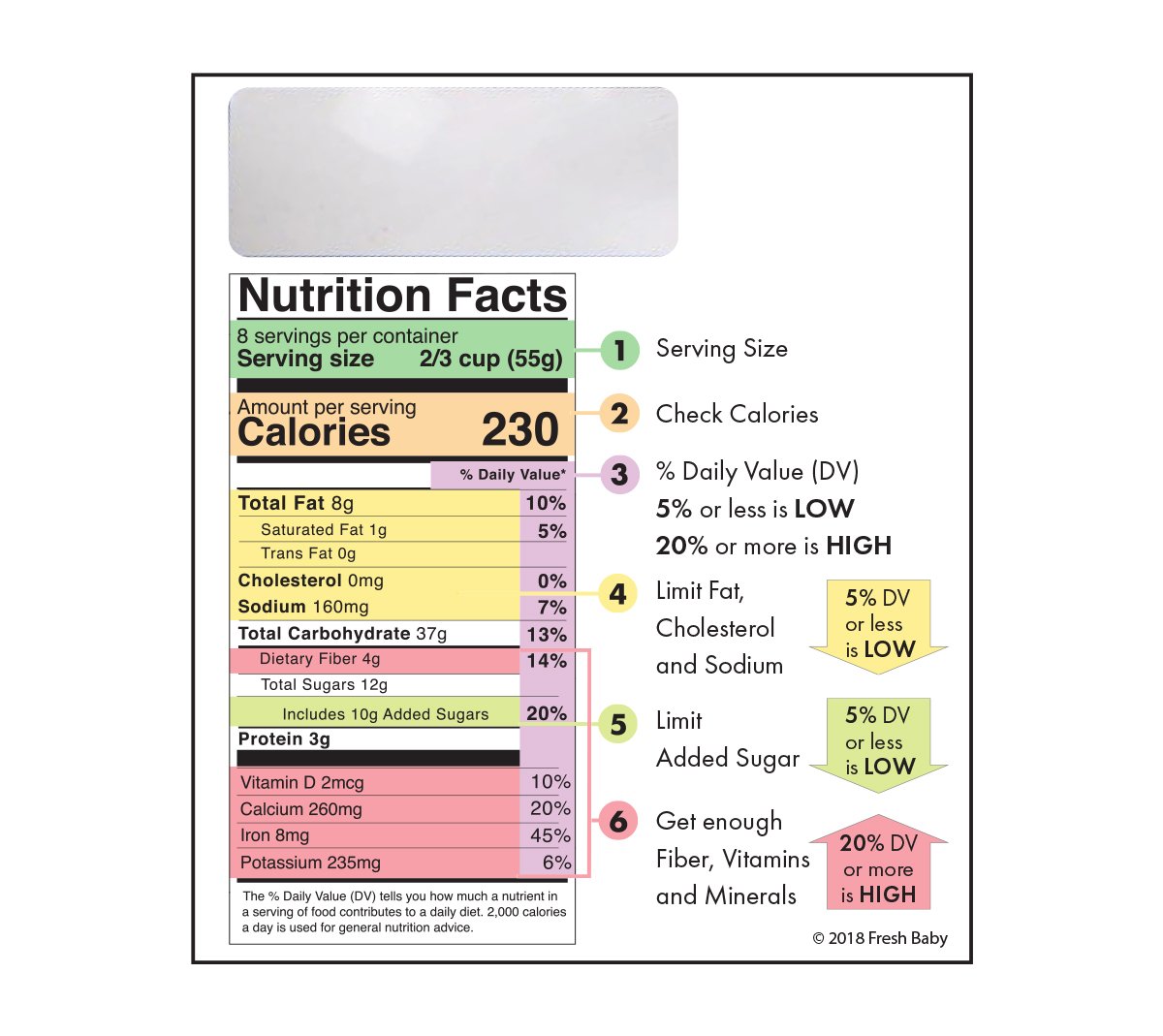
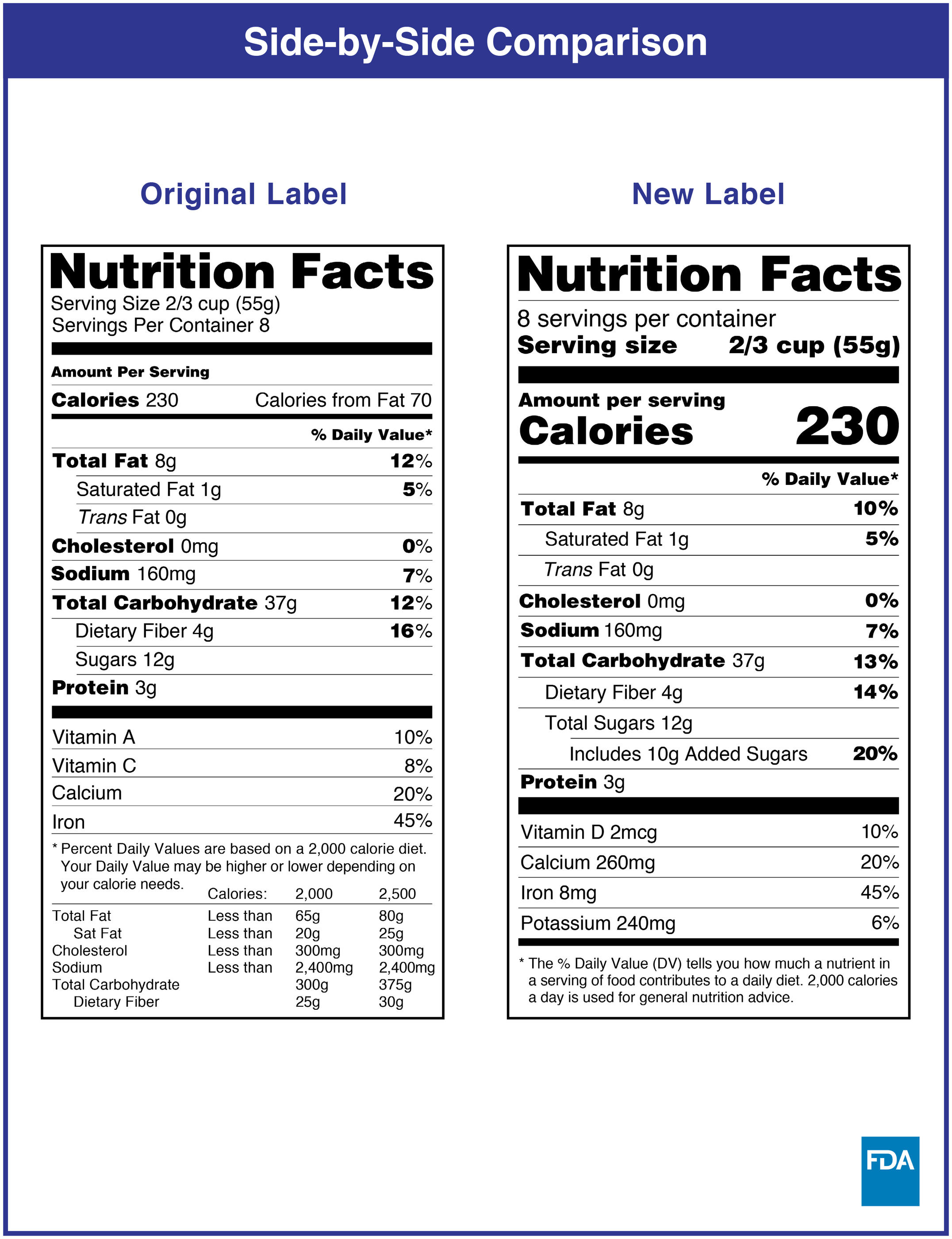


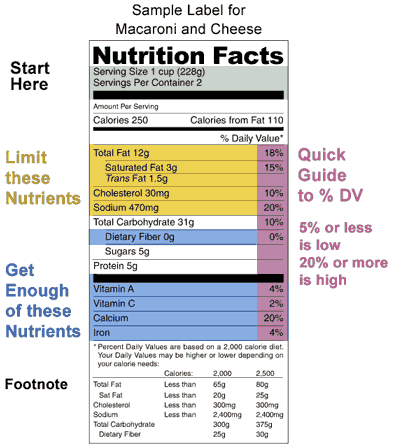



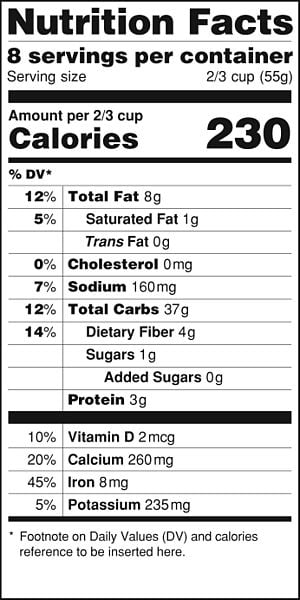

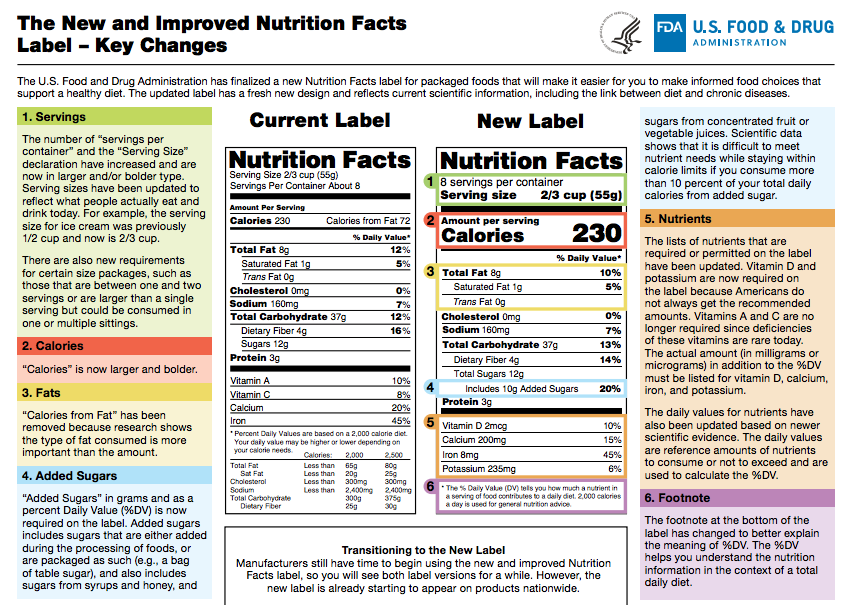
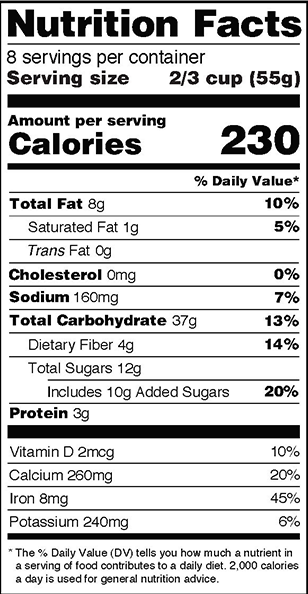
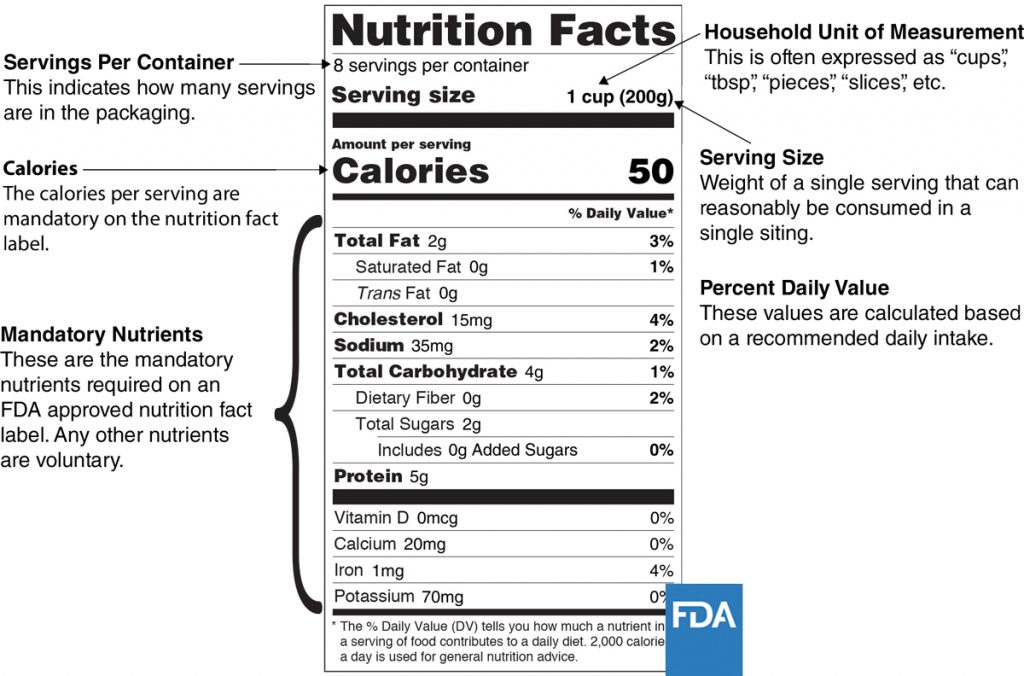
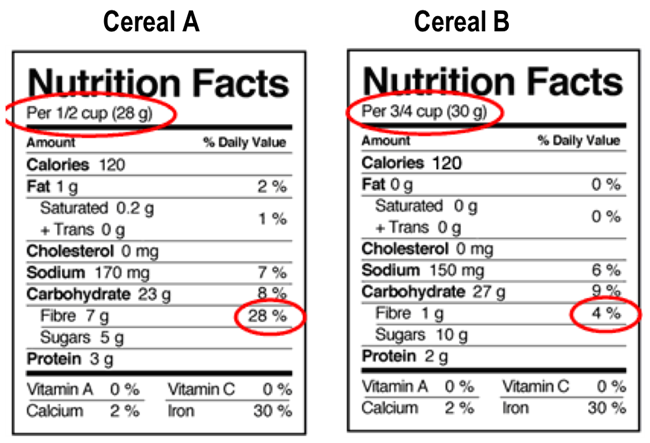


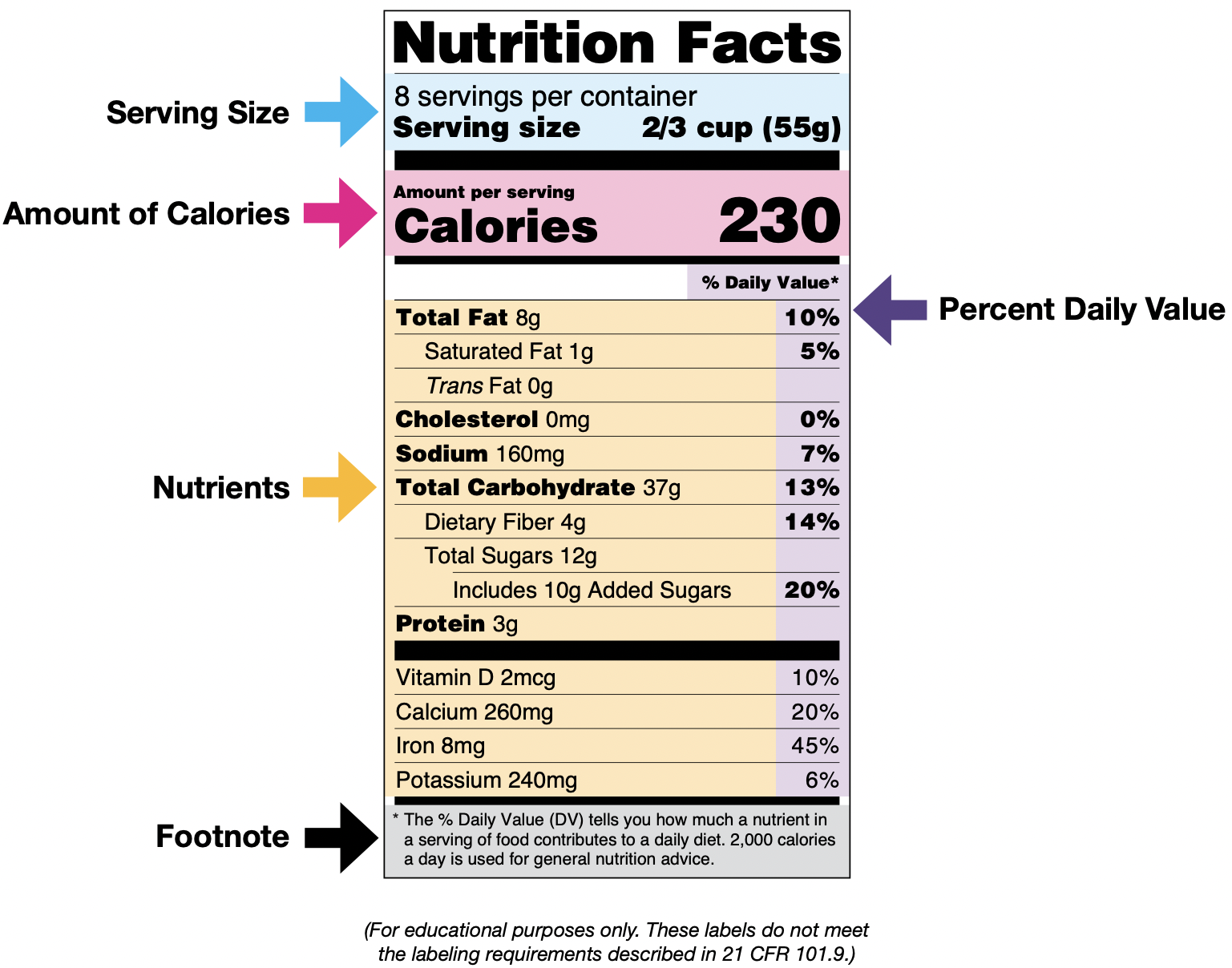


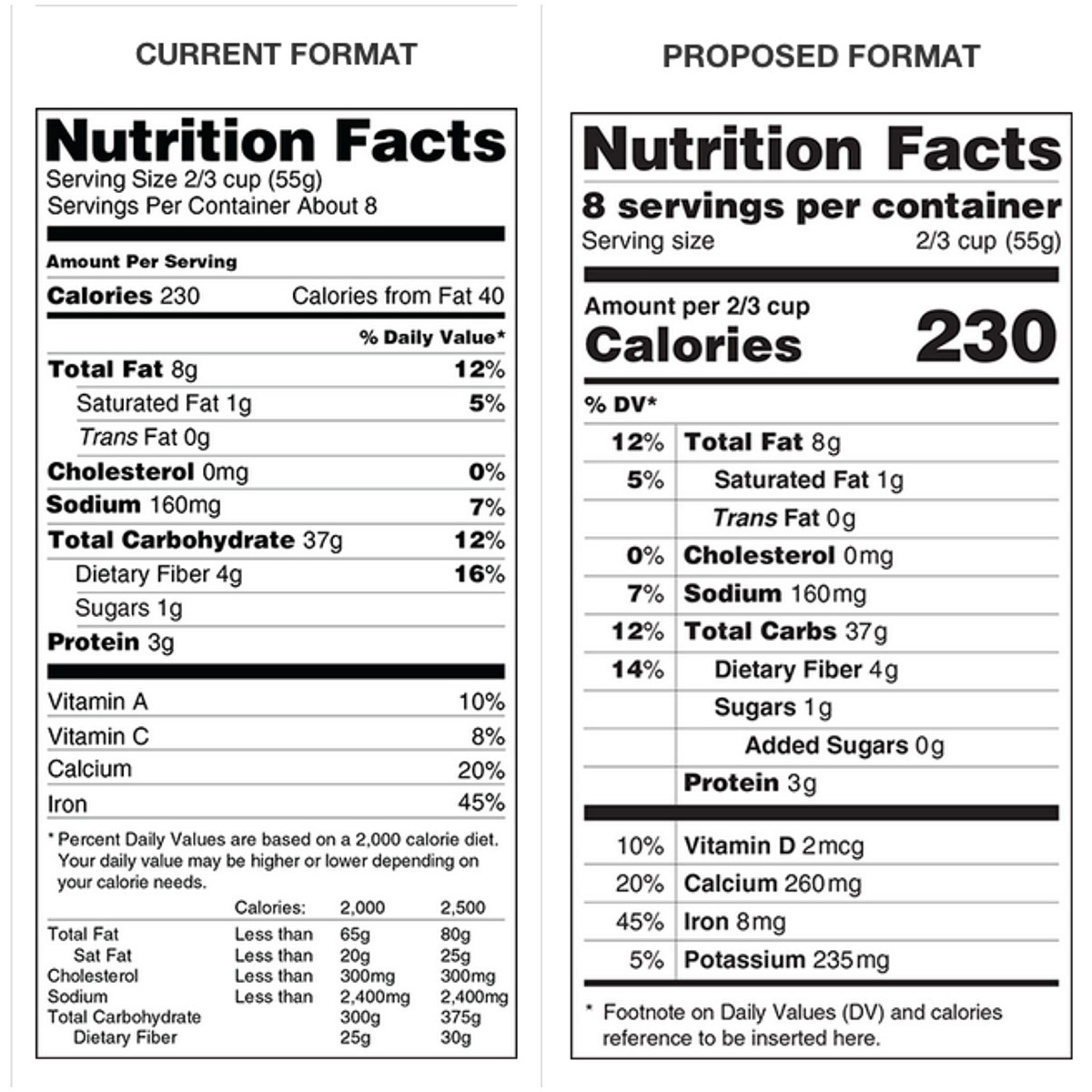
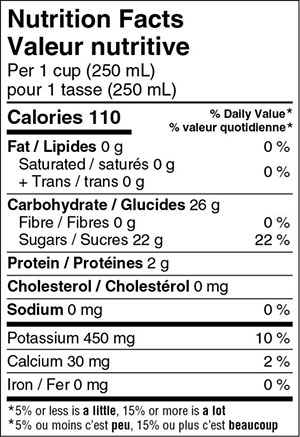


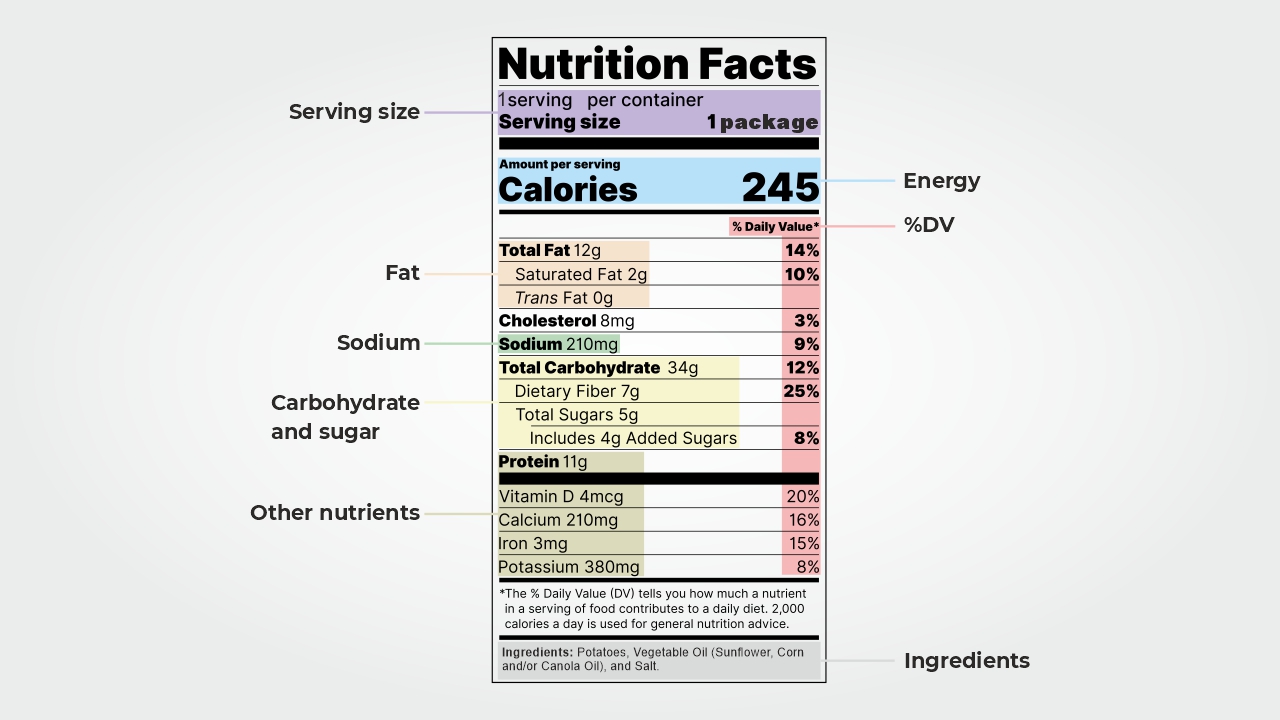

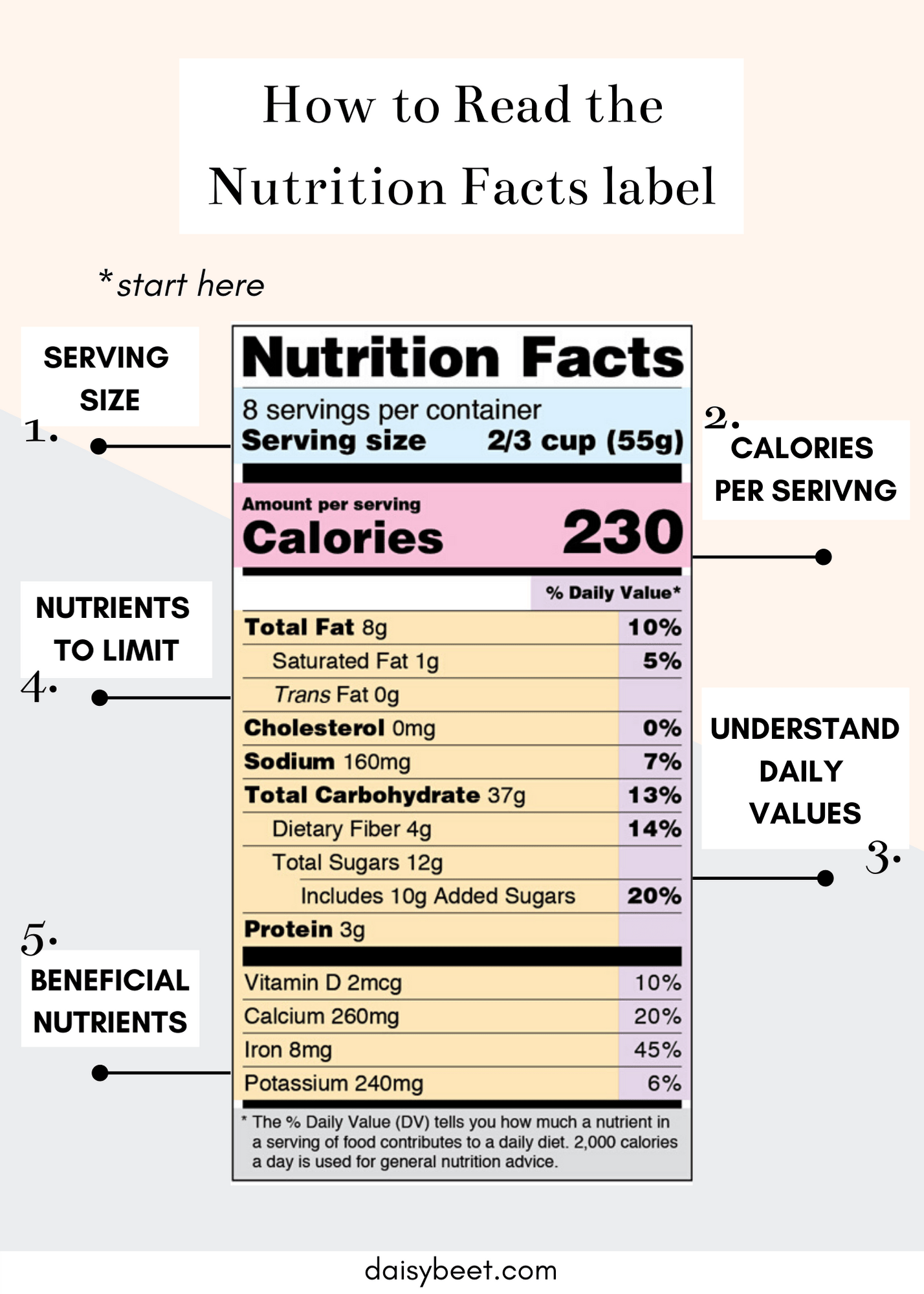

Post a Comment for "39 dv on food labels"